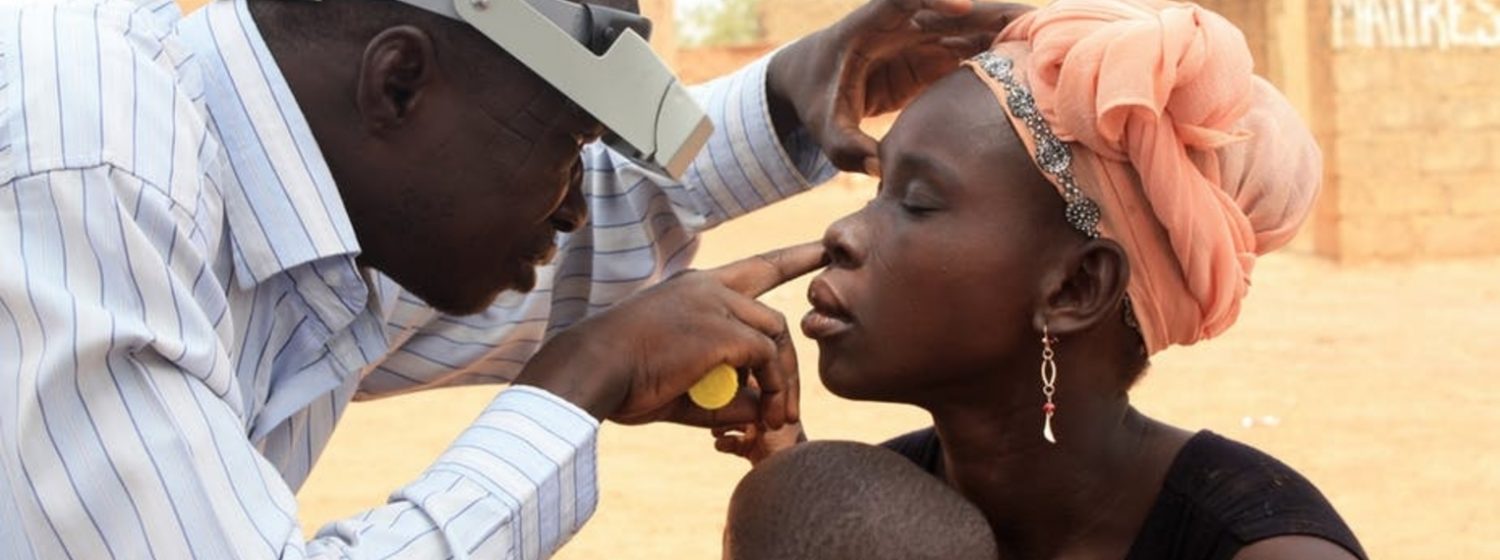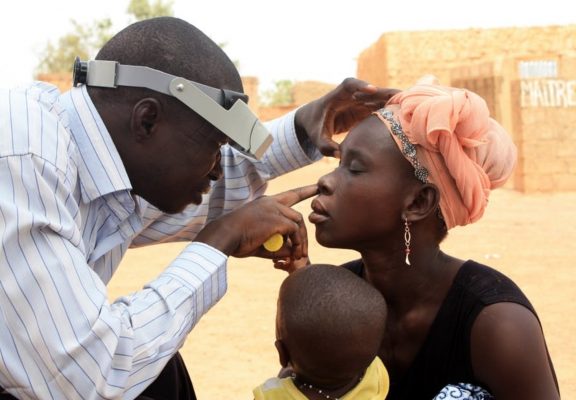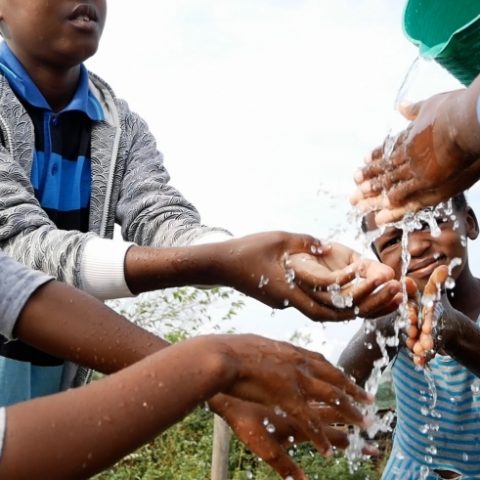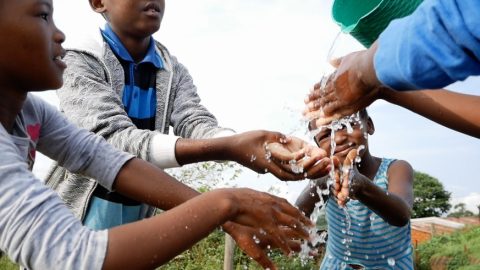

AHO warns of the dangers of trachoma
Trachoma is among the neglected tropical diseases (NTDs), which are a group of parasitic and bacterial infectious diseases that affect 1.5 billion people, and 40 percent live in Africa.
NTDs affect the poorest, most vulnerable people who live in hard to reach parts of Africa.
The diseases, disfigure and disable, keep children out of school and parents out of work, limiting their potential in communities stuck in poverty.
NTDs rank among the four most devastating groups of communicable diseases.
The conditions cause severe pain and long-term disability and lead to death in many people.
Amongst children, infection leads to malnutrition, cognitive impairment, stunted growth, and the inability to attend school.
Social isolation and physical ailments make working difficult for people with NTDs. Many people are unable to provide for themselves or their families and are left in a cycle of poverty.
Some of the other common NTDs include; Lymphatic filariasis, onchocerciasis, schistosomiasis, soil-transmitted helminths, among others.
TRACHOMA TYPES
Trachoma is a contagious bacterial infection that affects the conjunctival covering of the eye, the cornea, and the eyelids.
It is often associated with poverty and lack of proper hygiene.
This condition is caused by the Chlamydia trachomatis bacteria and that it is essentially totally preventable and curable if it is diagnosed and treated early.
Meanwhile, trachoma is the leading infectious cause of blindness in the world.
The types include acute trachoma, which is frequently found in children who are dirty, dusty and unhealthy.
The condition manifests as painful eyes, swollen eyelids, watery discharge from the eyes and itching of the eyes with ear, nose, and throat infection.
Tt usually affects one eye and gradually spreads to the other.
There is also recurring trachoma, where he says that if poor hygiene persists, the person gets affected again and again.
There is also chronic trachoma, where it causes inward turning of the eyelid such that the eyelashes rub against the cornea.
Gradually, the symptoms persist and instead of resolving, lead to chronic trachoma and blindness between 30 to 40 years if left untreated.
WHAT ARE THE RISK FACTORS?
Factors that escalate the risk of contracting trachoma include poverty.
Trachoma is primarily a disease of extremely poor populations in developing countries.
Another risk factor, is crowded living conditions, adding that people living in close contact are at greater risk of spreading infection.
Poor sanitation, he says, poor sanitary conditions and lack of hygiene, such as unclean faces or hands, help spread the disease.
Age is also another factor in areas where the disease is active, and it’s most common in children four to six years of age.
Gender is another risk factor. Women’s rate of contracting the disease is two to six times higher than that of men.
Lack of latrines, he explains, like populations without access to functioning latrines (a type of communal toilet) have a higher rate of the disease.
CAUSES
Trachoma is caused by certain subtypes of chlamydia trachomatis, a bacterium that can also cause the sexually transmitted infection, chlamydia.
The condition spreads through contact with discharge from the eyes or nose of an infected person.
Hands, clothing, towels, and insects can all be routes for transmission. In developing countries, eye-seeking flies also are a means of transmission.
SYMPTOMS
The major symptoms or signs of the initial stages of trachoma consist of;
Irritation and mild itching of the eyelids or eyes, drainage from the eyes that contain pus or mucus.
As the disease progresses, trachoma symptoms include, blurred vision and a marked sensitivity to light referred to as photophobia.
Another symptom is a pain in the eye.
Young children are most susceptible to this disease but the infection normally advances gradually, and the most painful signs or symptoms normally will not develop until adulthood.
COMPLICATIONS
Trachoma causes irritation of the eyes, starting with simple redness of the eyes and lids, progressing to the inward turning of the lids and irritation and scarring of the cornea, which may then progress to an opaque cornea resulting in blindness.
These complications are avoidable with adequate diagnosis and treatment.
With the development of the later stages of trachoma, with scarring of the lids and conjunctiva, he says vision is often decreased to the point where the individual is no longer able to work, resulting in the disruption of the family.
Because of profound visual disturbance or blindness, there may be an increased number of related injuries or even accidental death.
PREVENTION
Maintaining good hygiene and sanitation is essential to prevent this disease in developing countries, which has been eradicated in developed countries.
This, includes avoiding physical contact with a person suffering from trachoma.
Another prevention measure includes personal cleanliness, especially of the face and hands.
Washing hands and face frequently with soap and water is important, especially in children who are already infected to prevent re-infection.
Besides, keeping food covered and using clean latrines and toilets to prevent the breeding of flies is important.
TREATMENT
The treatment is relatively simple.
Single oral dose of antibiotics is the preferred treatment, plus making safe water available and teaching simple cleanliness.
“Because of cultural differences and widespread poverty in endemic areas, this regimen is difficult to implement on a universal scale.
Treatment also involves screening communities for the presence of trachoma in children one to nine years of age.
When over 10 percent are found to have a clinical disease, the entire community is treated with antibiotics. In areas with less disease, only targeted groups are treated
Due to the contagiousness of trachoma, it is necessary to treat all who might be in contact with the infected individuals.
When trachoma has progressed to the inward turning of the lashes, surgery is necessary to correct this and prevent the lashes from scarring the cornea.
The performance of this surgery can be taught to nurses or other medical personnel.
If significant corneal scarring already exists, corneal transplantation surgery may be required, which should be performed by an ophthalmologist.


Featured Programme
Trachoma Programme
Trachoma is a contagious bacterial infection that affects the conjunctival covering of the eye, the cornea, and the eyelids.
It is often associated with poverty and lack of proper hygiene.
This condition is caused by the Chlamydia trachomatis bacteria and that it is essentially totally preventable and curable if it is diagnosed and treated early.
Meanwhile, trachoma is the leading infectious cause of blindness in the world.

